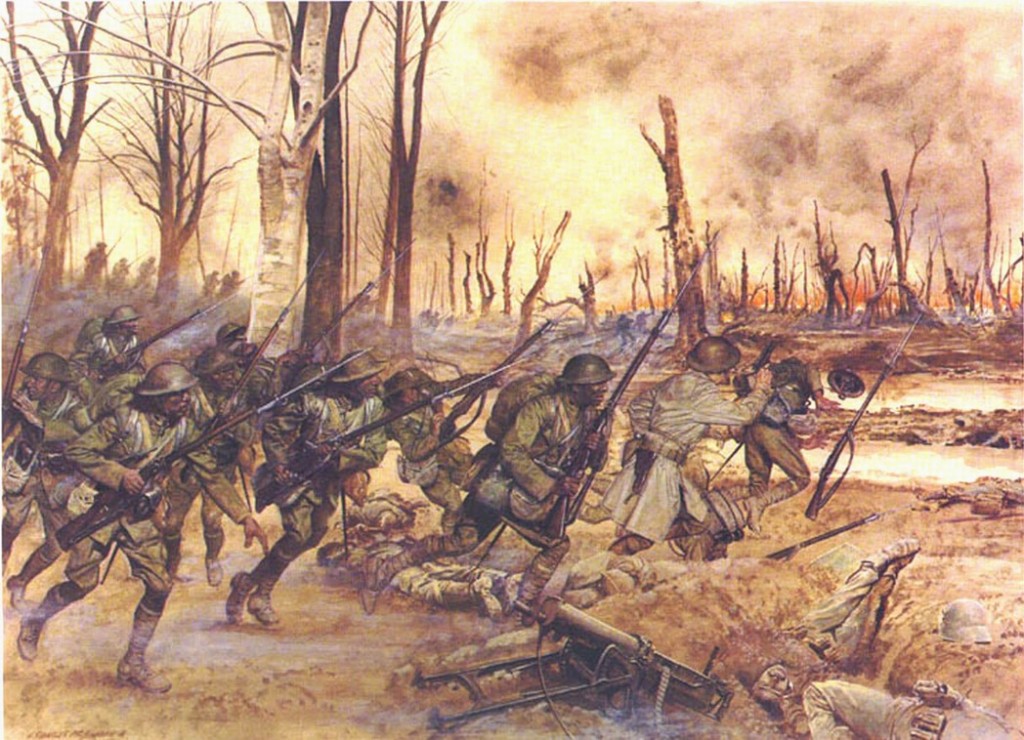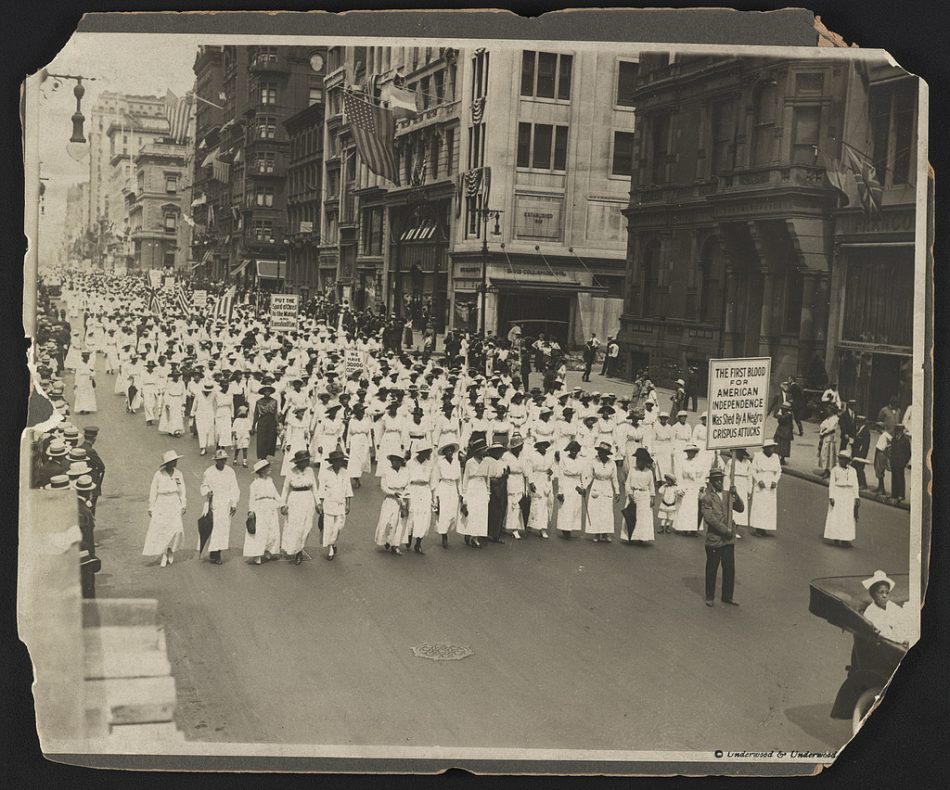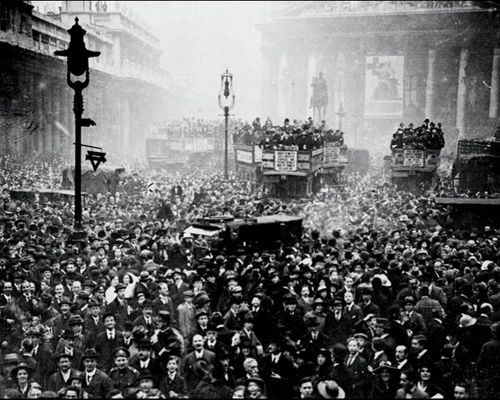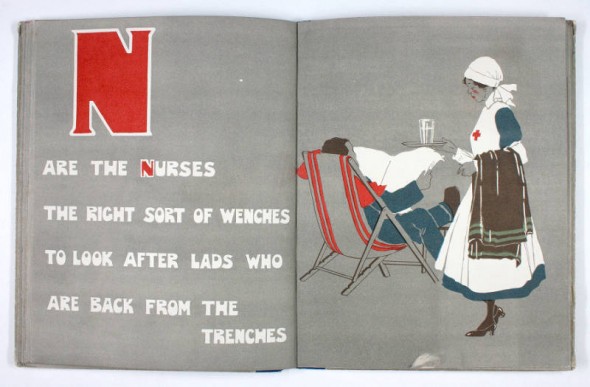
When the United States entered the Great War 1917, it was viewed with relief by the war-weary Allied armies. After the passage of the Selective Service Act, America’s relatively small army was bolstered by a draft of 2.8 million men, and by the summer of 1918, was sending 10,000 fresh soldiers to France every day. A hefty percentage of those draftees were black men who were assigned to segregated units commanded by white officers, and rarely saw combat, instead working as stevedores or in other menial positions. Also largely barred from duties were African-American nurses, who enrolled in the American Red Cross during the early days of the war, hoping to gain entry into the Army or Navy Nurse Corps. After much pressure, 18 nurses were offered Army Nurse Corps assignments in 1918, and four black women “were among the 3,480 ‘Y’ women volunteers who provided recreation for the American Expeditionary Force by staffing canteens, nursing, sewing, baking, and providing amusement and educational activities for the soldiers.”
These segregated units got their chance to shine when the French requested and received control of several regiments of black combat troops. Around this time, the front-lines of the French army were exhausted and angry, almost to the point of mutiny, so these fresh (and unwanted) forces were a Godsend. The most notable regiment was the 369th Infantry Regiment, also known as the “Harlem Hellfighters” among other names, who were organized in 1916 as the 15th New York National Guard Infantry Regiment and manned by black enlisted soldiers with both black and white officers. African-American regiments were usually accompanied by bands, but the Harlem Hellfighters’s band was led by a titan: Lt. James Reese Europe. Europe was one the earliest creators of jazz and he made his mark earlier in the decade with his Clef Club Orchestra, who performed at Carnegie Hall, and as band leader and collaborator for Vernon and Irene Castle. These African-American soldiers brought over not only their valor, but their red-hot music, which the French took to with alacrity.
Now under French command, the Hellfighters did much to prove just how wrong the United States was when segregating troops and refusing to use their black regiments. By the end of the war, 171 members were awarded the Legion of Merit, many were awarded Distinguished Service Crosses, and Sgt. Henry Lincoln Johnson, a railroad porter who, alongside Pvt. Needham Roberts fought off a 24-man German patrol with only a rifle used as a club and a bolo knife between them, was awarded the French Croix de Guerre. No one could ignore these achievements, and when the 369th returned to the United States, it was the first unit to march up Fifth Avenue from the Washington Square Park Arch to their Armory in Harlem, and their unit was placed on the permanent list with other veteran units.
Despite their unwanted or diminished roles in the Great War, African-Americans in combat, in nursing, and in civilian roles served their country in any capacity they could, and proved themselves equal to their white countrymen and women.
Further Reading:
The Unknown Soldiers; Black American Troops in World War I by Arthur E. Barbeau and Florette Henri
From Harlem to the Rhine by Arthur W. Little
The Hellfighters of Harlem: African-American Soldiers Who Fought for the Right to Fight for Their Country by Bill Harris
Scott’s Official History of the American Negro in the World War by Emmett J. Scott




In one of my books (it might have been Into the Breach: American Women Overseas in World War I), I recall reading about an AA woman who worked as a canteen volunteer, and how very, very glad the AA soldiers were to see her.
Thanks for the rec! Have you read Two Colored Women with the American Expeditionary Forces? It’s written by two (naturally) of the few black women allowed to travel to France towards the end of the war and gives an interesting account of their experiences in Europe and their reaction to the racism of the time.
Oh, nice. Thanks. For this war, the British Army had a number of black British soldiers and officers. The War Museum and some local military museums have galleries of interesting photos (combat, off duty, and on duty) of soldiers including British-born people of colour.
One example: Walter Tull, an (hunky) officer of the Middlesex Regiment, who served as a commanding platoon leader on the Front (and sadly, was killed in action). He worked as a professional footballer before the war. I believe he was the first black Army officer? BBC produced a single drama about him, based on his life story and experiences in the Army. It shows what sort he had to face. Let me find a page about him (there are loads)… here you go: http://www.spartacus.schoolnet.co.uk/FWWtull.htm
I know there is a documentary about British black nurses, but I can’t remember who produced it. Will dig it up if you’re interested.
Thank you! I knew I’d read about the black British soldiers of WWI, but feared searching through my bookmarks (it’s a nightmare, I tell you: four years worth of careless bookmarking *shudder*). And yes, I’m very interested in that documentary! It’s funny and slightly sad that it’s so difficult to find primary resources about minorities of the Edwardian era. There are plenty of secondary sources for African-American history, but even then, the topics can be too broad or don’t focus on social history. I’ve done a lot of digging to find the gems I have discovered.
True. There are four(?) diaries by a black Londoner, chronicling his everyday life as a boxing bookmaker and as husband of a white wife and three children. My god! Want!
Those diaries were found in a chest by a warden in a bombed house during the Blitz, who gave them to a vicar (whose hobby was writing books on local history). When he passed away, his contents were donated to a history society (no idea which one) that then donated this lot to the Museum of London Archive about ten years ago.
The diaries are in such poor condition that their archivist wouldn’t let any of us anywhere near them until they find a suitable means of preserving them (it’s basically four 50-page school notebooks).
I was sorry when I left my job because of things like this one. No chance of seeing them myself. *sob* There is so much stuff that are just too fragile to see the daylights. Depressing. The one I really, really want to see is a batch of papers that led them to create an act of Parliament to allow John Anthony to become the first Chinese man to be naturalised as a British citizen in 1805. I think there was a lot of bribery involved (JA was extremely wealthy and influential) but still, I’d like to see them.
Yeah, in that old job, I had fun stumbling across all sorts. I think people today have it a little easier because of online resources and tools like Google Books. Like those few short reels featuring of Edwardian-era people from the Mitchell and Kenyon film collection. Online access to a selection of reels is available here http://www.bfi.org.uk/features/mk/ In my time – only seven years ago – it was all “phone for an appointment”, “by appointment only”, “fill this request form for an access card”, “you’ll need to write this person for written permission to access this or that diary” and weeks of waiting or travelling. Now, it’s almost all online. Gad, lucky bastards today. Envious, me? Nah. 😀
Books about black Edwardians, my favourite remains “The Oxford Companion to Black British History”. It has a time line (from the Roman Empire days to approx. 1990s), a table of categories, articles and all sort, along with entries for all notable black Britons (about 500 entries?). It’s a fun quick-reference book. If I remember right, it has a couple of Edwardians and notable people of the Great War in there somewhere.
I couldn’t get the info on the black nurses documentary, but I’ll send out a S.O.S. Someone bound to have an answer soon enough.
I feel spoiled by the plethora of information available these days, but there remain vital pockets of resources which elude my grasp–and primary sources on the lives of people of color are one of them. 🙁 I’ll have to check my library for a copy of the Oxford Companion, and thank you for the s.o.s.; now I am very intrigued by the black nurses of WWI.